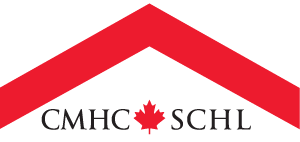Community-Led Innovation in Action
Welcome to Part 2 of our series on the Housing Design Catalogue. If you haven’t read Part 1 yet, it explains how the Catalogue supports Indigenous-led housing design as a flexible, community-driven tool. This final part focuses on real-world examples of how First Nations, Inuit and Métis communities are leading innovative housing design initiatives and how the Catalogue can complement them.
Across Canada, First Nation, Inuit and Métis governments and communities have developed innovative housing design resources tailored to their distinct needs. These initiatives show the strength of culturally grounded, community-led approaches. They also demonstrate how the Housing Design Catalogue can add value when used in alignment with local efforts.
First Nations National Building Officers Association (FNNBOA) – Technical Guide for Northern Housing
FNNBOA’s Technical Guide for Northern Housing is a practical resource created with input from communities. It’s designed to help support safe, healthy and energy-efficient housing in northern and remote First Nation communities. The guide is available as easy-to-use, illustrated booklets that share technical and engineering advice, along with best practices for building in northern climates.
FNNBOA also offers 3D Remote Building Inspections (3DRBI), which use 3D cameras to do virtual home inspections — an especially useful option for remote locations. They also provide free architectural drawings that follow the guide’s best practices and an Indigenous Building Knowledge Exchange for guidance on how to use these resources. Together, these tools help communities plan, assess and build long-lasting housing.
When used alongside the Housing Design Catalogue, communities can combine clear technical guidance with ready-to-use floor plans and elevation drawings. This can help speed up housing projects while respecting local knowledge and needs.
Nishnawbe Aski Nation – Community-Led Designs for Specialized Housing in the North Project
The Community-Led Designs for Specialized Housing in the North project — led by Nishnawbe Aski Nation and Together Design Lab — was created to move away from one-size-fits-all housing policies. It provides ready-to-build housing plans that meet a variety of local needs, including homes for Elders, single adults and people needing emergency or supportive housing.
Supported by CMHC’s Housing Supply Challenge, the project focuses on working closely with Nishnawbe Aski Nation First Nation community members to make designs that are free and ready for immediate construction. When used with the Housing Design Catalogue, these designs give communities even more options and flexibility — helping them meet housing needs without putting too much pressure on local resources.
Inuit Tapiriit Kanatami – Best Practices in Sustainable Housing Delivery in Inuit Nunangat
Published in 2016, this report from Inuit Tapiriit Kanatami shows how Inuit-led housing — built on traditional knowledge and community collaboration — can support sustainable, culturally appropriate homes. It highlights successful projects and defines sustainability as housing that is affordable, long-lasting and respectful of the land. Since the document’s publication, Inuit Tapiriit Kanatami and Inuit Treaty Organizations have continued to build on this work to improve housing for Inuit across Inuit Nunangat.
The Housing Design Catalogue can be paired with these best practices to help Inuit communities choose or adapt designs that meet their current needs while following Inuit-led values.
Métis Nation British Columbia – Architectural Design Guidelines Book
MNBC’s Architectural Design Guidelines Book helps Métis Nation British Columbia and its Chartered Communities design buildings that reflect Métis identity, values and self-determination. It shows how architecture can support a strong sense of community, cultural identity and connection to the land.
When combined with the Housing Design Catalogue, communities can include cultural meaning in their building projects while also saving time and reducing design costs.
Continuing to listen, learn and support First Nation, Inuit and Métis Housing leadership
The Housing Design Catalogue is one of many tools that can support Indigenous-led housing plans. Its value is in its flexibility and its ability to work with — rather than replace — existing community strategies.
CMHC is committed to listening, learning and working together with First Nation, Inuit and Métis partners. We know that meaningful housing must be guided by culture, community priorities and Indigenous self-determination.
Housing is more than just a building. It’s part of well-being, connection, and Nation-building. CMHC is here to support sustainable, culturally appropriate housing and encourages communities to explore how the Housing Design Catalogue can help meet their goals.
To learn more or get support, contact us or reach out to the CMHC Indigenous housing specialist in your region.
New to this series? Start with Part 1 to learn how the Housing Design Catalogue supports Indigenous-led, culturally grounded housing plans.






